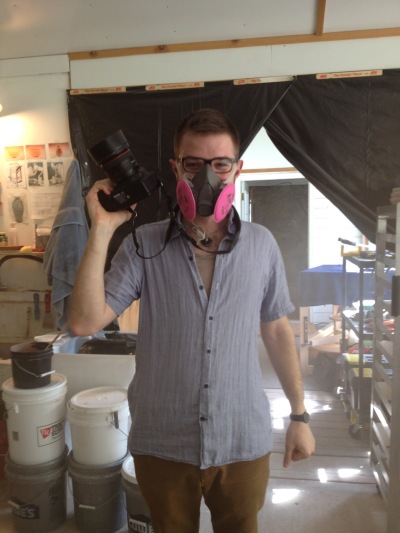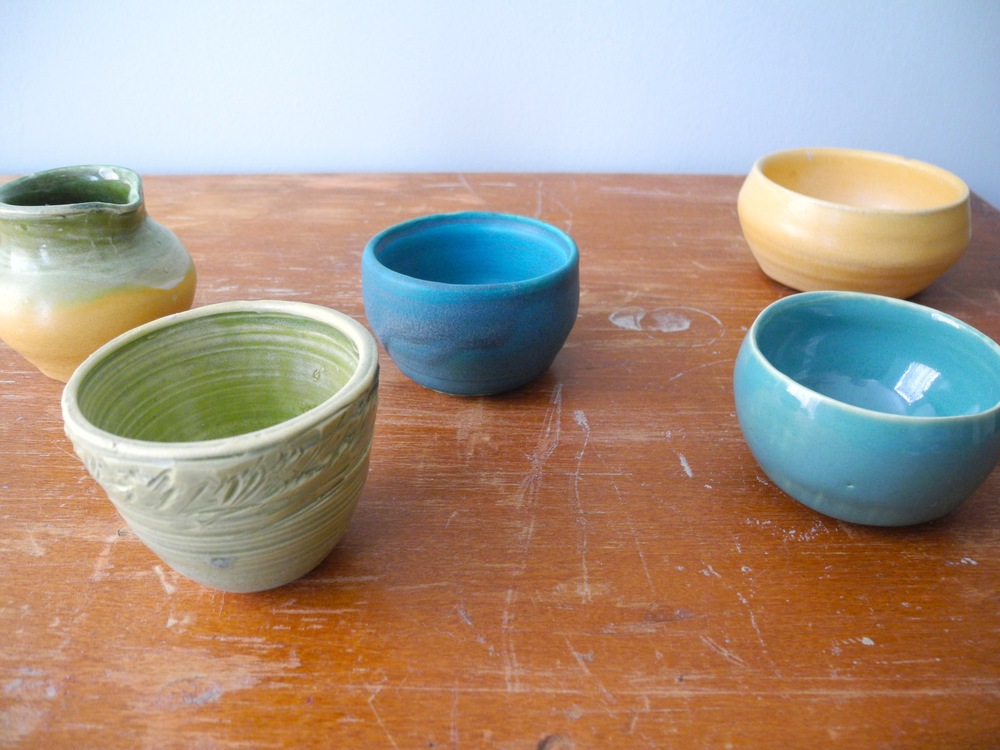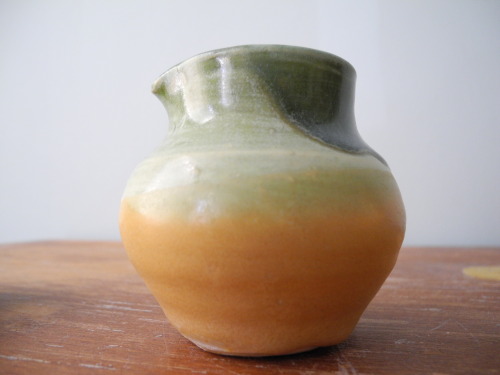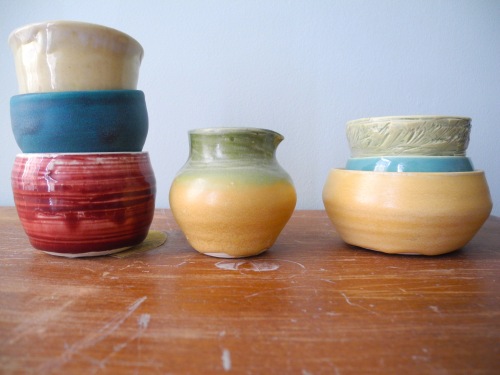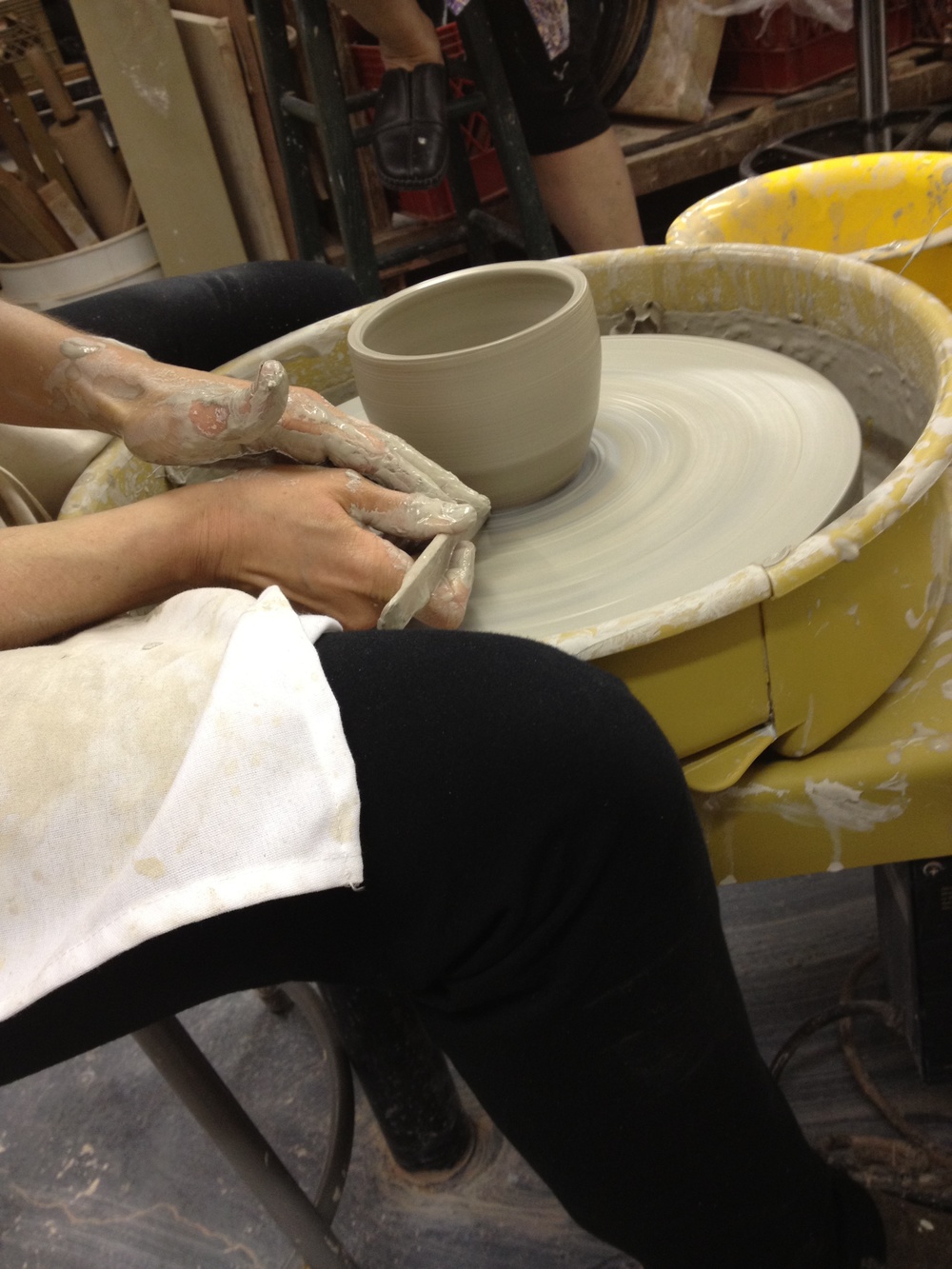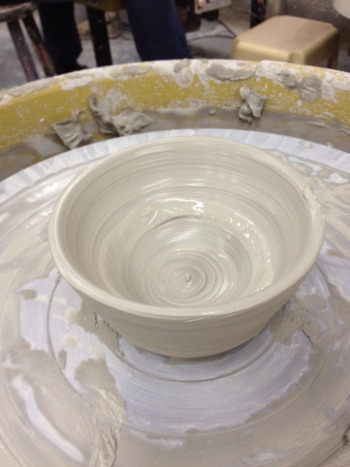
Almost exactly one year ago, I got into a car wtih Jared Flood and Karen Schaupeter, both of whom I had brought on board to photograph and style Simon Leach's Pottery Handbook. We were headed to Simon Leach's house in rural Pennsylvania, and I must admit, we didn't have much of a plan. Many people know Jared Flood as the creator of the yarn line Brooklyn Tweed, but what many don't know is that he is also an amazing painter and a fantastic photographer--a true lover of art and master of light. And for the styling, Karen Schaupeter is our go-to girl, always adaptable, versatile, and loads of fun to have on set. Basically, I had my pottery photoshoot dream team, and we were headed to the countryside to shoot on the fly. We had a one-page shoot list that broke down the book by chapter, and we had a pretty good idea of what we hoped to photograph when we arrived, though we had no idea what would actually be waiting for us when we got there.
When we pulled up to Simon's house and saw the amazing stonework of the building, the lush green of the hillsides, the decked out studio in his garage, the throwing-wheel set-up on his front porch, and the rows upon rows of ceramics in various stages of completion, we knew it was going to be a fun time.

One of the first things to catch my eye when I entered Simon's studio was this set of teaching tools meant to illustrate the eight steps of creating a cylinder. He had them casually set up on a shelf near the wheels, and in just a matter of minutes, Karen had scooped them up and artfully arranged them on a ware board on the floor of the garage to create this stunning chapter opener.
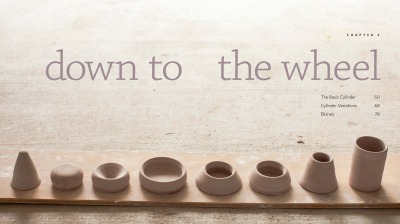
Throughout the day, as Karen consulted with the authors, Simon Leach and Bruce Dehnert, about the objects for the still lifes, Jared roamed around shooting the myriad beautiful items in their organic settings, like this table full of bisque-fired pottery that was sitting by the kiln.

In this photo, Karen works with Simon to set up a still life of tools used to decorate and glaze pots.

And once they were happy with the arrangement, they called Jared over to weigh in on the framing and snap the shot.
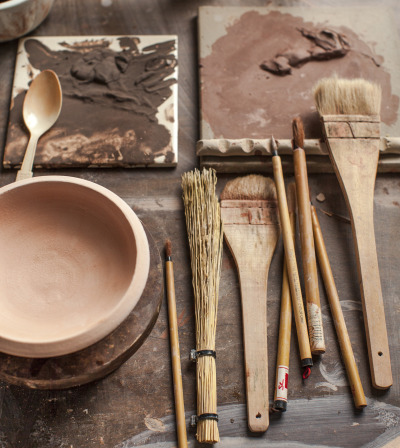
And of course, a trip to a pottery studio wouldn't be complete without a little fire and smoke (or a lot, in this case). At the end of the second day, as Simon removed the scorching hot pots from the raku kiln and dropped them into hay-filled buckets to cool, Jared donned a respirator so he could get in for the tight shots without bursting into a coughing fit.
And I would say the resulting dramatic photos were worth it!
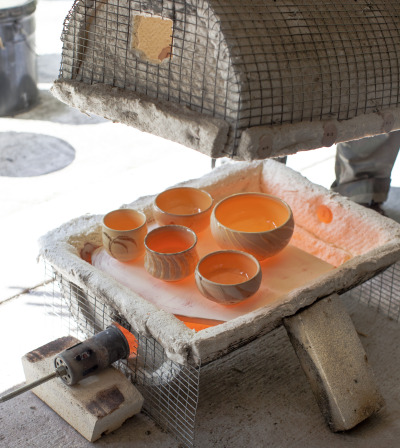
One year later, with the book completed, printed, and on sale, it's funny to look back on our process. At the time, it felt like a dizzying amount of planning and organizing, mixed with a big dose of improvisation. But now, when I look at the finished book, it all seems so neat and orderly, so pretty and calm. It reminds me of something Simon said to me when he first saw the designed pages of his book after working on the manuscript for such a long time:
"It reminds me of the analogy of a Persian carpet in the process of being woven. On the top side you see a harmony of patterns being woven, very orderly, very neat, beautifully crafted...on the underside you see a whole load of tangled, knotted loose ends!! In fact what appears to be total chaos. Clearly you guys have been busy weaving!"
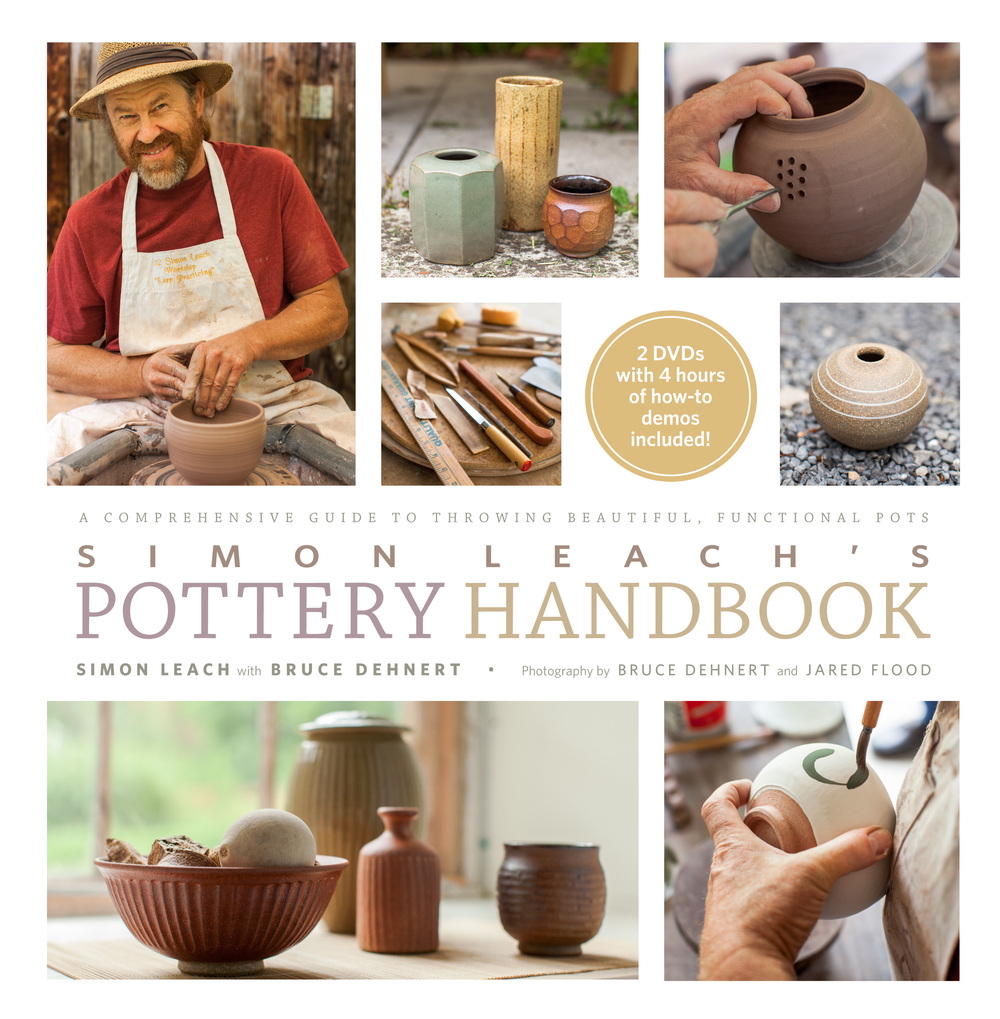
To see more of Jared's fabulous photography from Simon's book, be sure to check out the gallery here.

